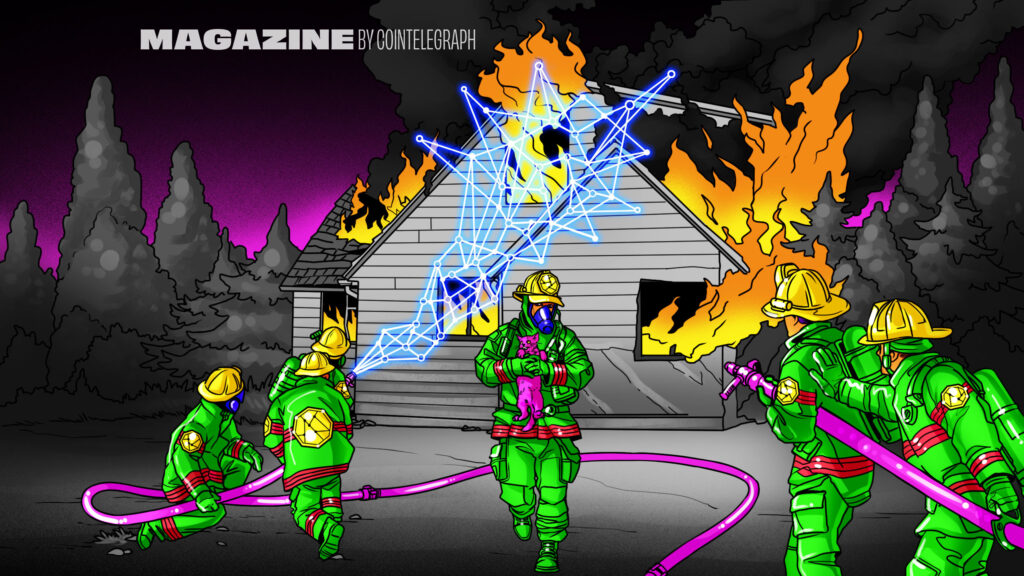It seems that every time one turns on the TV, something, somewhere, is going catastrophically wrong. Whether it be Hurricane Ian tearing
It seems that every time one turns on the TV, something, somewhere, is going catastrophically wrong. Whether it be Hurricane Ian tearing through Cuba and Florida, war raging in Eastern Europe, or floods devastating Pakistan, there has been no shortage of crises in 2022 — both natural and human-caused.
And as the climate continues to warm, extreme weather events and other natural disasters are only expected to occur more frequently, which may also potentially lead to greater overall regional and global instability. In response, some groups working to build decentralized community resilience are now turning to blockchain and Web3 tools to help strengthen their initiatives.
The United States experienced one of its worst natural disasters in modern history when the Category 5 Hurricane Katrina slammed into the New Orleans area on Aug. 29, 2005. The morning prior, the National Weather Service had issued an ominous warning to the residents of the city and the surrounding area:
“MOST OF THE AREA WILL BE UNINHABITABLE FOR WEEKS…PERHAPS LONGER. […] POWER OUTAGES WILL LAST FOR WEEKS…AS MOST POWER POLES WILL BE DOWN AND TRANSFORMERS DESTROYED. WATER SHORTAGES WILL MAKE HUMAN SUFFERING INCREDIBLE BY MODERN STANDARDS.
Unfortunately, the bulletin proved to be accurate. Thousands of people lost their lives, and millions were left homeless after the city’s outdated, flawed levee system was overwhelmed by flood waters.
The government’s response to the disaster, particularly that of the Federal Emergency Management Agency, was one of utter dysfunction. Affected residents were left with little to no assistance from government authorities, instead banding together as communities and decentralized networks to support one another. The crisis served as a wake-up call for many that the government and its centralized institutions won’t always be there to save them in a catastrophe.
Three and a half years later, Satoshi Nakamoto mined the genesis block of the Bitcoin blockchain — born out of another major emergency, the global financial crisis, which devastated economies worldwide in 2008. Like Hurricane Katrina, it opened the eyes of a generation to the reality that established systems propped up by politicians and government officials are actually rather fragile. Given that governments may fail to protect their citizens, it is often up to communities to build alternative support structures.
Read also
Features
NFT communities greenlight Web3 films: A decentralized future for fans and Hollywood
Features
Cleaning up crypto: How much enforcement is too much?
Since the genesis of Bitcoin, the crypto and blockchain space has greatly evolved and expanded, heavily fueled by the growth of Ethereum and its smart contract functionalities. Today, the Web3 ecosystem built around networks like Ethereum is thriving, and even the greenest of crypto participants can mint tokens, drop NFT collections and vote in DAOs with a few minutes of research and a few clicks.
Should it come as a surprise, then, that more and more people in the world of community resilience are turning to blockchain technology to help prepare for and recover from disasters? For these organizers, Web3 solutions such as multisig wallets and DAOs provide a level of democratic governance that can’t be achieved through traditional systems, while also offering innovative ways to fundraise and empower residents. But convincing their peers that it’s worth embracing these tools can be an uphill battle, and not everyone believes they will make any significant difference.
A history of innovation
People and communities using decentralized technologies in response to disasters is nothing new. After Hurricane Sandy swept through New York City in October 2012, for example, the nonprofit Red Hook Initiative established a decentralized wireless network called Red Hook WiFi by using mesh networking that allowed residents to communicate and coordinate while power and internet service were still out in the neighborhood. And as the military conflict in Ukraine has proven, having access to cryptocurrency during large-scale crises can be invaluable, especially if one needs to flee the country.

One area within the broader community resilience space that has proven itself particularly forward-thinking is mutual aid — and the onset of the COVID-19 pandemic and the lockdowns that followed resulted in an explosion of interest in it. According to the book Mutual Aid: Building Solidarity During This Crisis (and the Next) by…
cointelegraph.com
